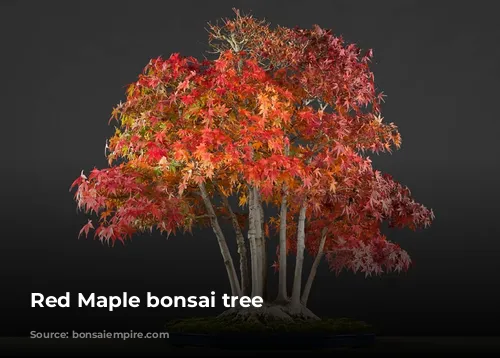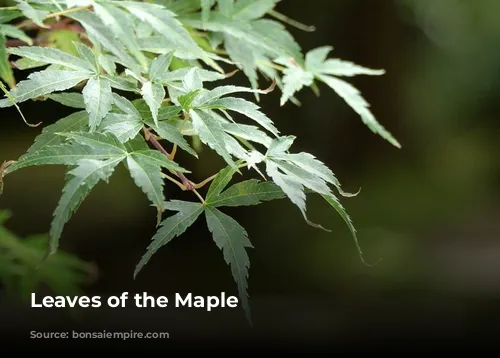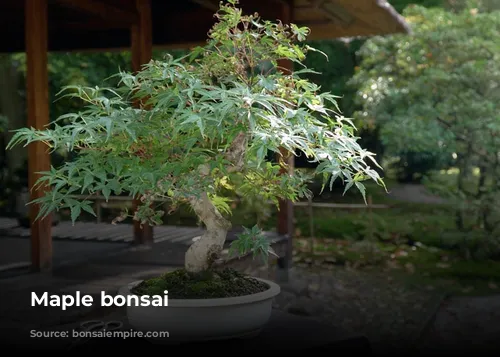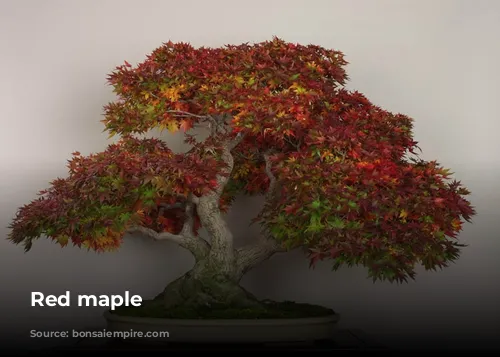The Japanese Maple Bonsai is a beautiful and graceful tree, but it does require some special care to thrive. This guide will walk you through the key aspects of caring for your Japanese Maple Bonsai, from watering to pruning and repotting.

Watering Your Japanese Maple Bonsai
Like most Bonsai trees, the Japanese Maple Bonsai needs consistent watering. During the growing season, your tree should be watered daily, and even more often on hot days if the soil is well-drained.
Always water based on observation, ensuring the soil never dries out completely. However, avoid using calcareous water, as the Japanese Maple prefers a neutral or slightly acidic pH value.
Feeding Your Japanese Maple Bonsai
To keep your Japanese Maple Bonsai healthy and vibrant, fertilizing is essential.
Solid, organic fertilizers are ideal, as they provide all the necessary nutrients and release them slowly and gently. Follow the instructions carefully for the correct dosage, and consider using a liquid fertilizer once a week to encourage stronger growth on young plants or raw material.
Avoid fertilizers with high nitrogen concentrations, which can lead to excessively large leaves and internodes.

Pruning Your Japanese Maple Bonsai
Pruning is a crucial part of maintaining the shape and health of your Japanese Maple Bonsai.
Trimming shoots and twigs can be done year-round, but strong branches should be pruned in autumn or summer to promote quick callus growth and minimize bleeding.
When pruning thick branches, apply a cut paste product to prevent fungal diseases from entering the wounds. The Japanese Maple is susceptible to fungal infections, so taking this precaution is essential.
New growth should be pruned back to one or two pairs of leaves, while mature Bonsai can be pinched to maintain thin twigs. After the first leaf pair unfolds, remove the soft tip of the shoot to prevent the twigs from thickening.
Leaf pruning can be done to encourage a second, finer flush of growth, but it should be done infrequently, as it can stress the tree. Remove all leaves, but leave the leaf-stems intact.
Partial leaf pruning is a gentler method that can be done annually. Simply remove the largest leaves, closely spaced leaves, or the leaves in the strongest areas of the tree.

Repotting Your Japanese Maple Bonsai
Your Japanese Maple Bonsai should be repotted every two years. Its strong roots grow rapidly and will quickly fill the pot.
When repotting, prune the roots efficiently, using a well-drained soil mixture like Akadama mixed with Pumice and lava rock.

Common Problems and Pests
While the Japanese Maple is a sturdy tree, it can be affected by pests and diseases.
Aphids, sap-sucking insects, can be a problem in spring. Use a standard insecticide spray to eliminate them, following the directions carefully.
Verticillium wilt, a fungal disease, can cause partial or complete dieback. This disease is untreatable and can be transmitted to other trees via Bonsai tools. You can identify it by black spots in the fresh cuts of the wood.
If you suspect Verticillium wilt, thoroughly clean and disinfect your tools to prevent its spread.
The Japanese Maple: A Closer Look
The Japanese Maple (Acer palmatum) is a member of the soap tree family (Sapindaceae) and is native to Japan, China, and Korea. Its botanical name comes from its hand-shaped leaves with five pointed lobes.
In nature, the Japanese Maple grows as a shrub or a slender tree, reaching heights of up to 15 meters. Its leaves are divided into 5-11 pointed lobes with toothed edges. In spring, the new leaves emerge in a range of colors from yellowish to orange to bright red, depending on the variety. The Japanese Maple is also admired for its spectacular autumn colors in shades of yellow, orange, and red.
The bark of young trees is smooth and green or reddish, turning light grey with age. Its reddish flowers bloom in clusters from May to June and develop into winged seeds that resemble propellers when they fall to the ground.
There are over 500 cultivars of the Japanese Maple, each with its own unique characteristics, such as different leaf colors or shapes, dwarf growth, and interesting bark textures. Popular varieties include Kiyohime, Kashima, Shishigashira, Arakawa, Deshojo, and Seigen.
The Japanese Maple is a beautiful and versatile tree, making it a popular choice for Bonsai enthusiasts. By following these care tips, you can ensure your Japanese Maple Bonsai thrives for years to come.

